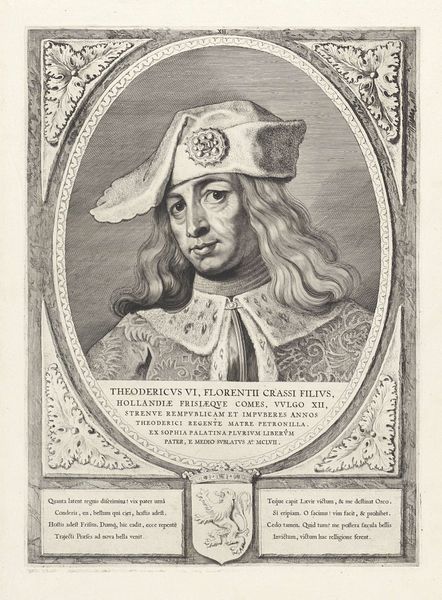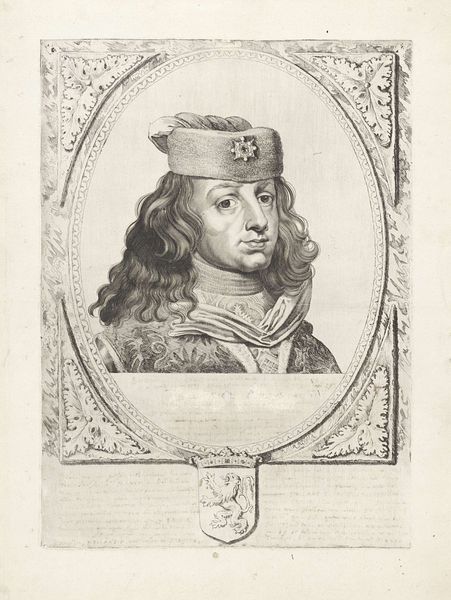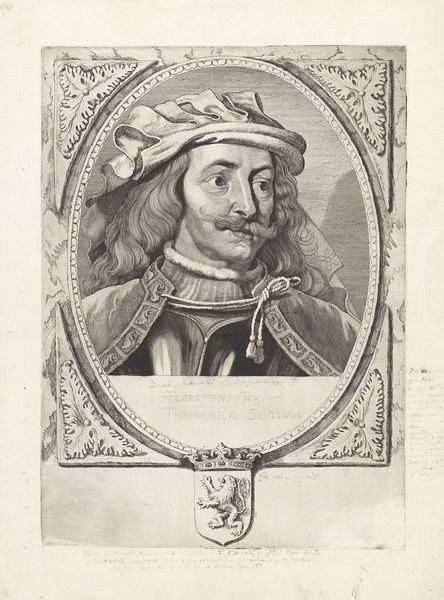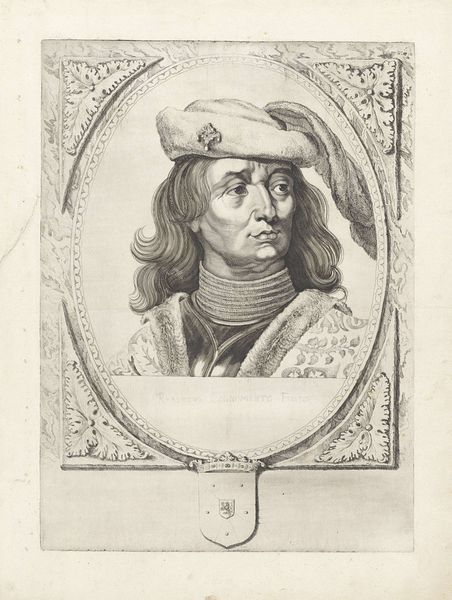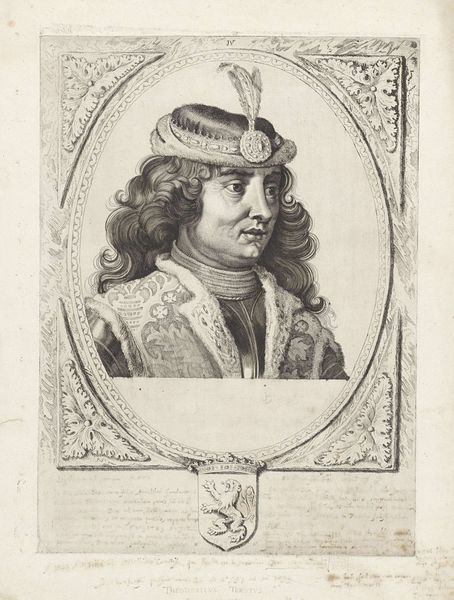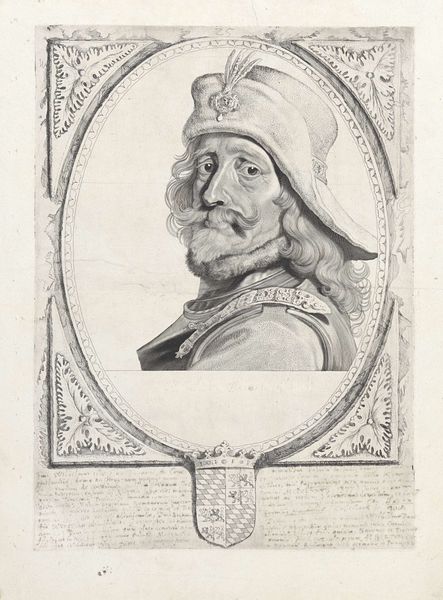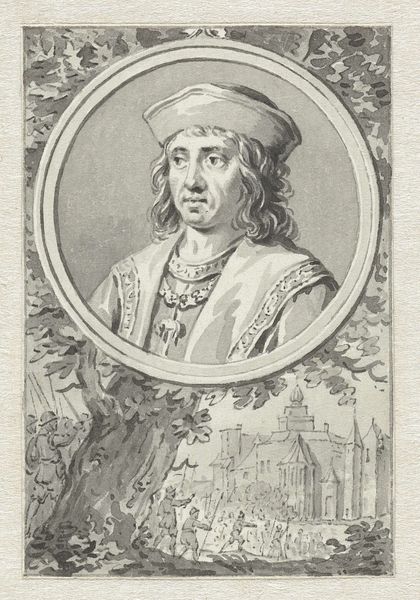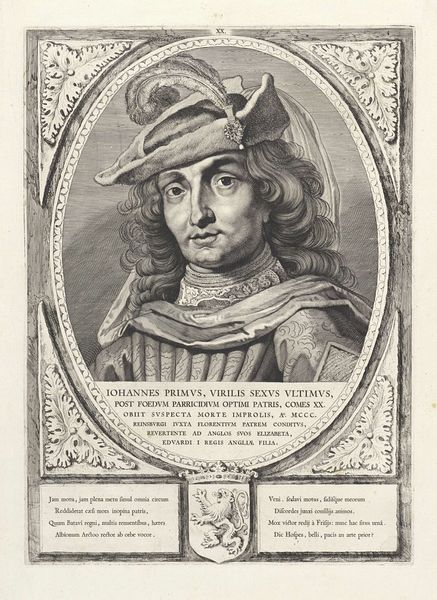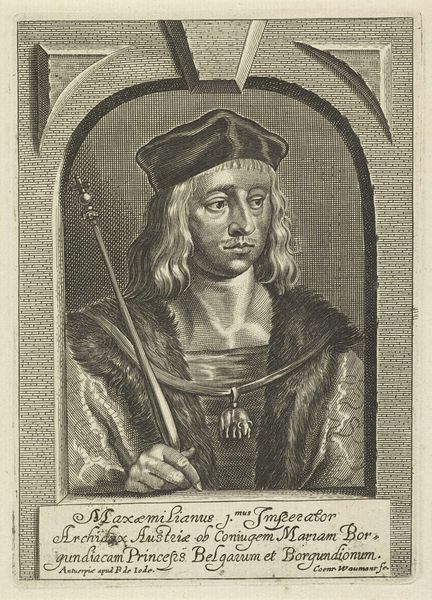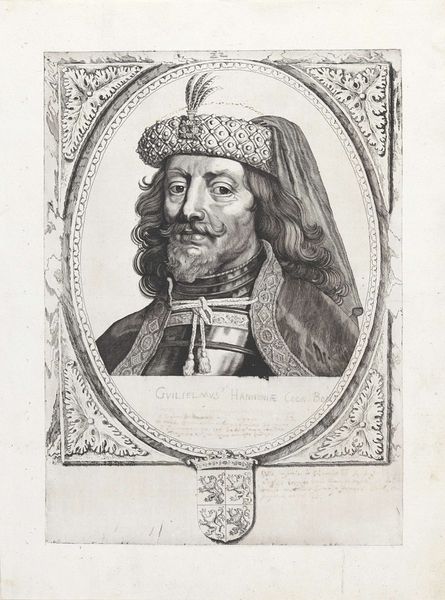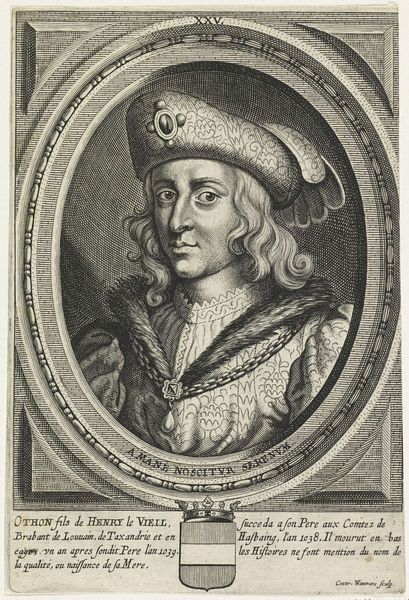
print, engraving
#
portrait
#
baroque
# print
#
old engraving style
#
engraving
#
realism
Dimensions: height 401 mm, width 293 mm
Copyright: Rijks Museum: Open Domain
Curator: Before us, we have Cornelis Visscher's 1650 engraving, “Portret van Dirk VI, graaf van Holland,” currently residing at the Rijksmuseum. Editor: The etching creates such an odd, ethereal atmosphere. The way the subject is framed contributes to a striking feeling of disconnection and ambiguity. Curator: Absolutely. Visscher's strength lies in the structural arrangement; the oval frame adorned with floral motifs perfectly contains and contrasts with Dirk VI. Notice the stark heraldic shield below, which acts as a visual anchor, stabilizing the composition. Editor: And the detail in the material rendering is rather fascinating. Consider the labor involved in producing this precise matrix. It is made possible by the network of craftsmen creating the paper, inks and pressing equipment for the printer, an unseen army, rendering it reproducible and democratizing noble representation. Curator: Indeed. And what’s fascinating is the way Visscher uses the etching technique to define the portrait's emotional texture. There's a deliberate choice of line quality, with short, hesitant strokes building up shadow and depth, giving the piece a nervous tension. Editor: Look, you can almost feel the density of the paper and smell the oiliness of the ink, considering all the careful steps in the work. Its physicality offers us a glimpse into 17th-century artisanal practices. Curator: By isolating him in this ornate oval, Visscher encourages us to analyze Dirk VI. Stripped bare of his context, he's transformed into a symbol, ready for structural decoding. Editor: But the material context also transforms the reception. As it moved through early modern urban centers, its meaning was further negotiated by the shopkeepers who sold it, the collectors who archived it, and those who encountered it in daily life. Curator: Well, I suppose the convergence of form and social context presents multiple angles of exploration when interpreting a portrait such as this one. Editor: Exactly, and this type of print helps us investigate art beyond a privileged setting and look instead at its use by, and presence in, early commercial environments.
Comments
No comments
Be the first to comment and join the conversation on the ultimate creative platform.
